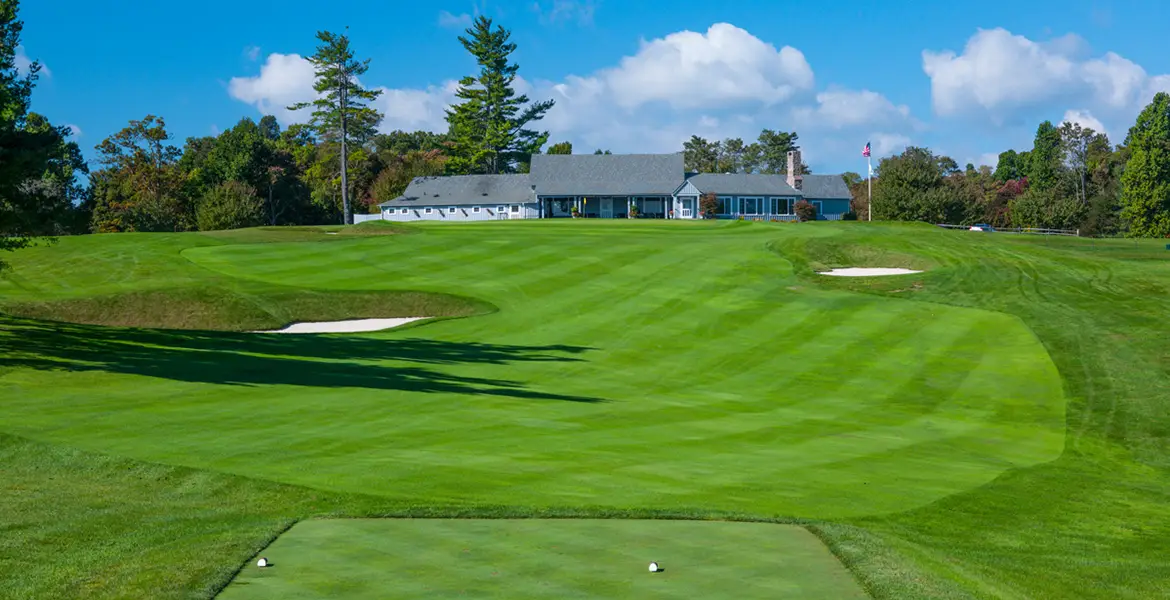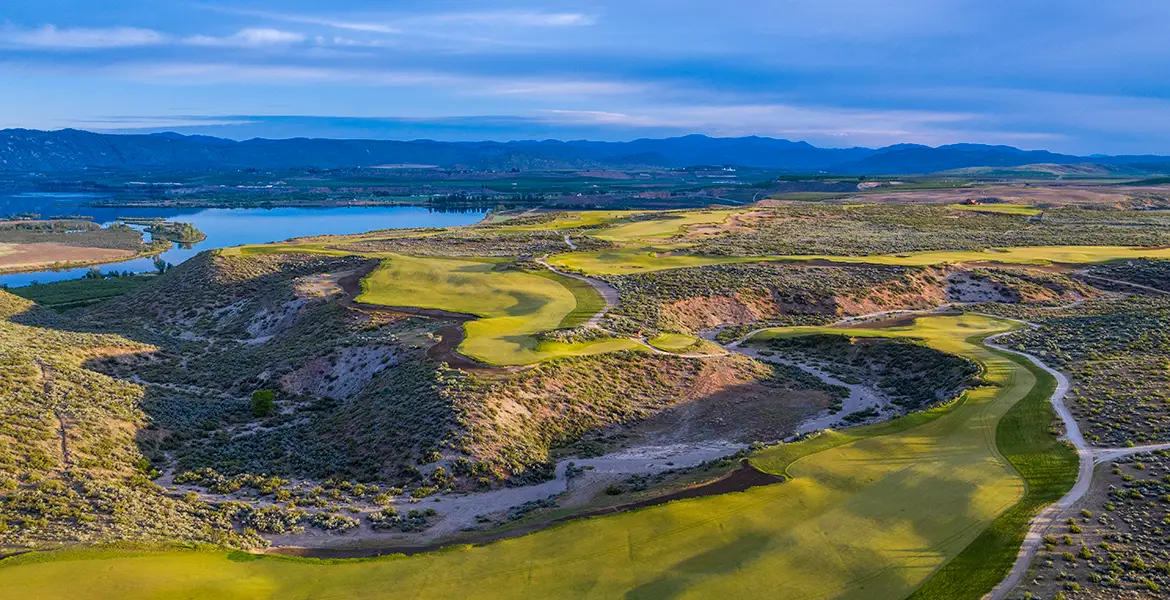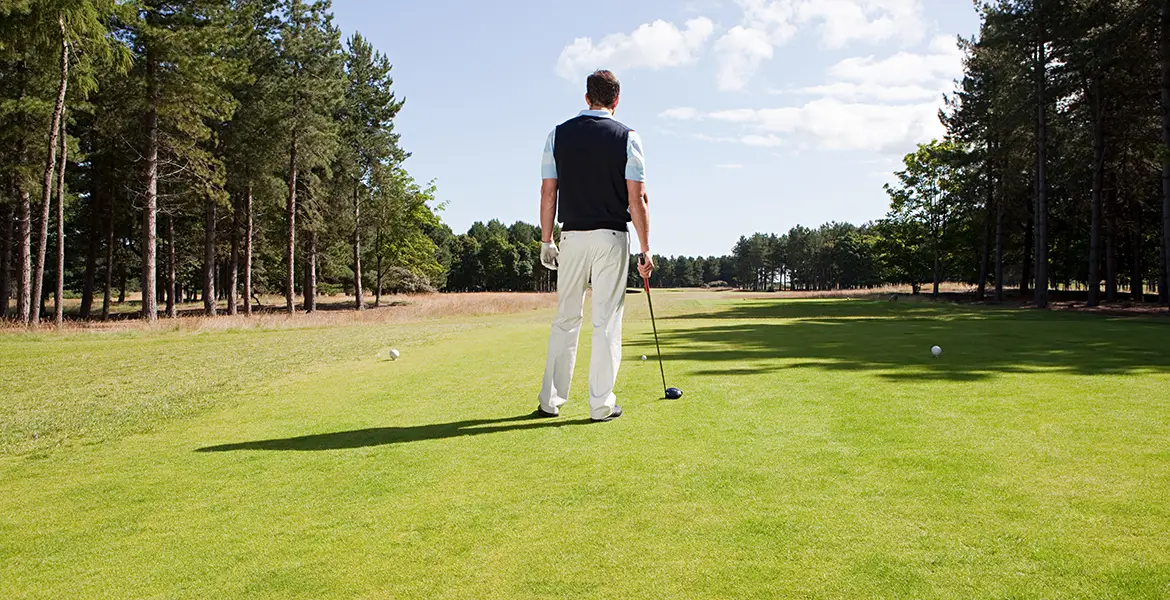Tourism to America’s nearest European neighbor, Iceland, has more than doubled in the last decade and one of the best reasons to go there is the golf
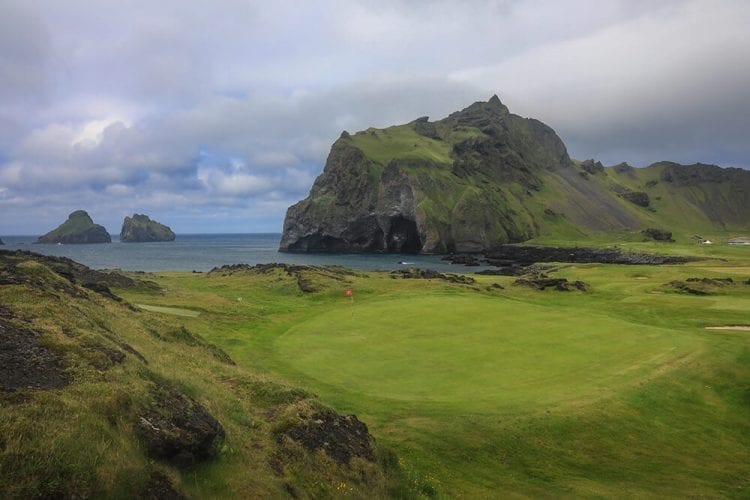
Had you been a fly on the wall of the restaurant I visited a few months back, you would have overheard one of the more bizarre exchanges a patron can have with a maître d.
“Good evening,” I said. “The name is Peper. I believe we have a reservation for two at 7 p.m.”
The reply: “Of course sir, and would that be for dinner or for golf?”
Now granted, there was a sporty 18 holes just out the door of this little bistro, but a reserved tee time at 7 p.m.? Really?
Really. This was Iceland.
Indeed, we could have settled in for a five-course meal followed by a leisurely post-prandial beverage or two, and then played 18 holes, such is the magic of this land where summer brings virtually 24 hours of daylight.
We’d made this trip partly to settle a score. Remember that Icelandic volcano with the unpronounceable name (Eyjafjallajokull) that erupted nine years ago, wreaking havoc with European air travel? Well, my wife and I had planned to fly that week, from London to Johannesburg to meet up with our two sons for a long-anticipated family safari. The boys, heading out of New York, made it fine. Libby and I were stranded in the UK for five days. Ever since, I’d wanted to pay my disrespects to that vindictive Vesuvius.
But there was also a cheerier reason for our visit: golf. Iceland, somewhat astonishingly, is an excellent place to play. America’s nearest European neighbor (just a five-hour flight from Boston) boasts 65 courses. Mind you, 50 of those are nine-holers, but among the other 15 are some very good—and incredibly beautiful—places to put a tee in the ground. Iceland’s climate isn’t as forbidding as its name implies—90 percent of the terrain is ice-free year round. And the best news is that the population is just 340,000: That translates to roughly 470 humans per golf hole, which happens to be the best ratio in the world. (Scotland and Ireland both are 570–1, the U.S. is 1,200–1, Spain 6,200–1, and China 170,000–1.)
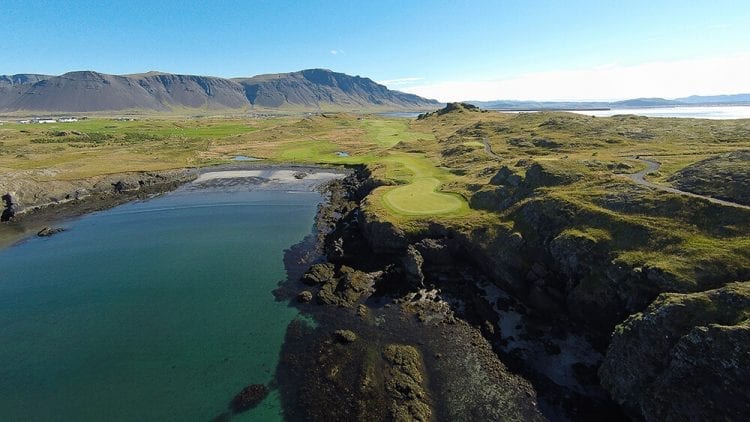
Most of Iceland’s courses, like most of its people, lie within a few miles of the capital city of Reykjavik, and that is where our five-day excursion began, at the birthplace of Icelandic golf, the Old Course at Reykjavik Golf Club (Grafarholt), which opened in 1934. It spreads across a massive bowl, some holes swooping up the sidewalls, others sliding back down, and playing the front nine can feel a bit like Olympic skateboarding. The back is flatter and more restrained except for the surprise of the 15th, a tumbling 600-yard, dogleg par five with OB left, water right, and a bulk-headed green that Pete Dye would have been proud of. Overall, however, this is a charming course where the only sounds are the Nordic chirps of a variety of songbirds, and the views over Reykjavik and the Denmark Strait are stunning.
Equally arresting were the vistas from the Oddur Golf Club, a heathland course perched above the city on the site of an extinct volcano. Fully 10 percent of Iceland’s surface is covered with lava and the same was true at Oddur, which offered a mixture of broad, brawny airstrip holes and snug little doglegs where the challenge was to keep the ball on something pliant and green rather than brittle and brown.
Competing for attention with the lava was the vibrant purpleness of lupine, an aggressive plant that has all but blanketed this nation since its introduction several years ago, invading not just the golf courses but the yards and gardens, pastures and paddocks, hillsides and roadsides, just about anywhere something can grow, to the point that it has divided Icelanders passionately between those who love it and those who want it obliterated. I must say I rather liked all the lupine, but then, I don’t have to live with it.
Our morning round was followed by a drive of the Golden Circle, a 140-mile tourist trail that showcases the full measure of Iceland’s natural beauty, from lava fields to ice caves, glaciers to geysers, ice-capped mountains to rainbow-haloed waterfalls. In the tiny town of Geysir (whence the word), we got a free carwash courtesy of one of the resident spouters. I thought we’d been lucky to time it so perfectly until I learned that particular geyser pops off once every four minutes.
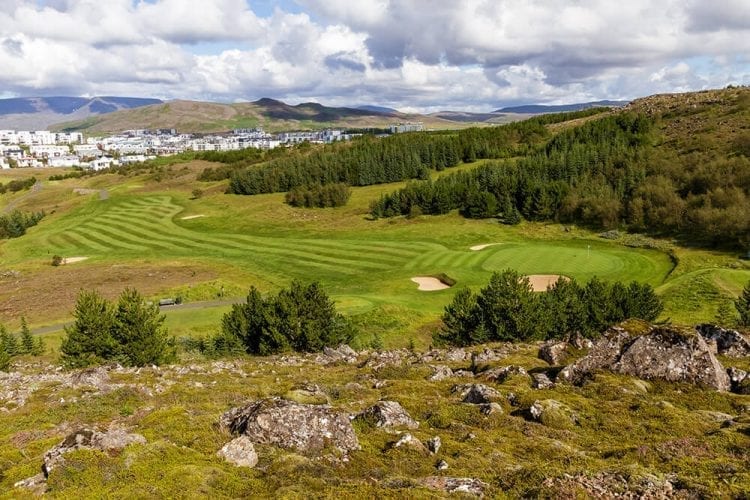
As we looped back to Reykjavik, I said to Libby, “This landscape is amazing. They could’ve filmed Game of Thrones here,” at which point she fixed me with her “you idiot” stare and said, “They did film Game of Thrones here.” Sure enough, no fewer than 16 scenes from the HBO hit series were shot on location in the land of fire and ice. Indeed, that’s a big reason tourism to Iceland has more than doubled in the last decade, to more than a million visitors a year.
If, however, you happen to like your landscape clad with majestic trees, you’ll be severely disappointed. A favorite joke among Icelanders is this one:
Question: What should you do when you’re lost in a forest in Iceland?
Answer: Stand up.
Having experienced the full measure of Mother Nature’s Icelandic pulchritude, I should have been ready for our next course, but frankly I don’t think anything can prepare you for Brautarholt. In terms of topography, think Cabot Cliffs, Old Head, Whistling Straits, Cape Kidnappers, but smaller, linksier, and closer to the water, with a cozy charm none of those courses can muster.
Just seven years old, Brautarholt is the work of Edwin Roald, a young Reykjavik native with strong views on golf architecture, including the notion that we should not be slavish to the idea of 18 holes, rather each course should take its size and shape from the land on which it lies (just as the original Scottish courses did). Brautarholt is just 12 holes—12 unforgettable holes. The first of them is a twisting par five played from an elevated green to a gangplank green, cinched tightly on a cliff between the sea and a massive hill. It just may be the world’s most dramatic opening hole. The rest of the round brings more of the same, with the Atlantic Ocean constantly in view and often in play. Knee-high fescue, marshy ponds, volcanic outcroppings, black- sand beaches, and wildly contoured greens all add to both the beauty and the challenge.
On the morning we played, the course was almost empty. One reason is that, given the abundant daylight during the summer months, most of the locals play after work, with the busiest tee times between 4 and 8 p.m. For visitors, midnight golf is available as it is at all the major courses—they’ll even shuttle you from your hotel and back—and at Brautarholt, if you rent a set of clubs, they’ll include three golf balls. But trust me, you’ll need more than that.
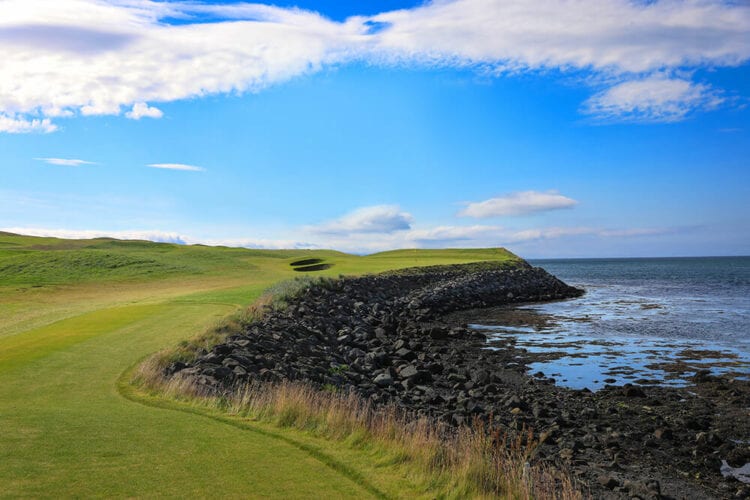
Our lone day outside Reykjavik brought a pleasant two-hour drive to the south coast followed by a 45-minute ferry ride to the island of Heimaey and the Vestmannaeyja course. Golf here began in 1938 with a six-hole layout that didn’t grow to nine until 1962. A decade later, they were set to expand to 18 when one of the island’s volcanoes decided to erupt, forcing all 4,500 residents to evacuate to the mainland. The spewing-forth continued for five months, enlarged the island by 20 percent, and left the golf course and everything else under a thick blanket of ash. It was four years before play resumed and another two decades before the course became a full 18. But the result was worth the wait and is well worth the trip. This is one spectacular place to play.
The first nine, including the original six holes, wanders through the basin of an extinct volcano backdropped by a mountain, while the finishing stretch tiptoes along the sea, culminating at the 17th, an all-carry 145 yards across a rocky inlet. As we arrived at that tee, a tour group of two dozen or so suddenly approached from out of nowhere. “Please, no,” I said to myself. “This shot is intimidating enough without a bunch of gawkers.” I needn’t have worried. They’d come not to see me but the resident bird life: Heimaey is home to the world’s largest puffin colony. Not a soul was watching as I fatted an 8-iron onto the beach.
Driving home that afternoon, we stopped at the town of Hella just long enough for me to throw a rock in the general direction of the aforementioned Eyjafjallajokull. Another stop was at the fence of one of the myriad horse farms along the route. The horses of Iceland are both a breed apart and an attraction of their own. Imported by the original Viking settlers and never cross-bred, they are roughly three-quarters the size of a normal horse and are blessed with silky laissez-faire manes that make them as adroable as horses can be.
All of which added some interest to dinner that evening. Mind you, the menu at an authentic Icelandic restaurant can be a bit daunting. Along with the staples—whale, puffin, and dried fish—one is apt to find such delicacies as fermented shark, sheep’s head, and even pickled sheep’s testicles (all at prices that are equally attention-getting). Beef is a rarity—in fact there’s not a McDonald’s in the entire country (meat is too expensive to import). On this particular evening, I eschewed the entrees involving marine mammals and ovine extremities and made my boldest choice of the week, opting for Braised Horse Bordelaise. Believe me, it wasn’t easy to shake visions of sweet little ginger-haired Dobbin as I tucked into my fillet, but I must say it was all quite tasty.

Back in Reykjavik, we had one day left, one more course to play, and it turned out to be the finest of them all: Keilir. Barely 10 minutes from our hotel, there it was, a Jekyll & Hyde masterpiece, the outward half on a dead flat moonscape, all nine holes carved from volcanic rock with every green backdropped by igneous boulders. There was no rough to speak of—just fairway and lava with the occasional sinister pond. The route from the 9th to the 10th tee was a massive climb, and what appeared on the other side of the clubhouse could have come from another planet—nine wide-open holes gamboling around a cliff top, six of them beside a picturesque little harbor with a view across the bay to a distant glacier.
Keilir is not long (all the courses we played were in the 6,000–6,500-yard range), but I can’t think of nine holes anywhere that call for greater precision than the front side here, and the inward half is pure exhilaration, highlighted by number 14, a 460-yard Cape hole that hugs the harbor all the way. This is a course I’d jump at the chance to play again, and since it’s less than half an hour from the airport, who knows, should I ever get a long layover on a bargain flight to Scotland… even if it’s in the middle of the night.


